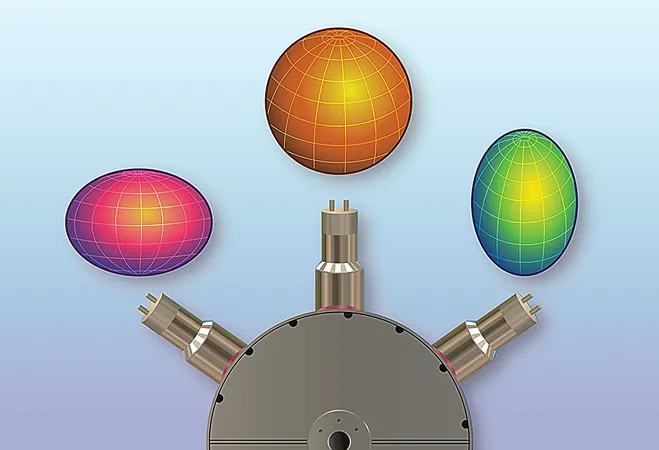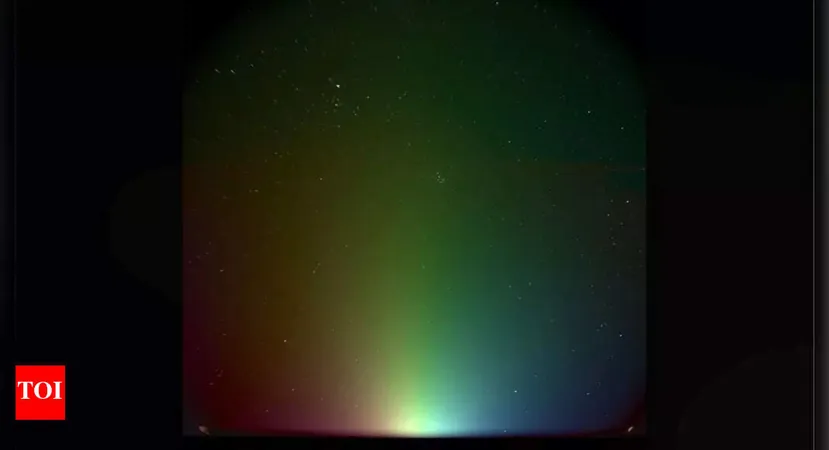
Exploring the Mysterious Dual Shapes of Cobalt-70 Nuclei
2025-06-09
Author: Jacob
Breaking New Ground in Nuclear Physics
A groundbreaking discovery at the Facility for Rare Isotope Beams (FRIB) at Michigan State University is revolutionizing our understanding of atomic nuclei. Researchers have unveiled that cobalt-70 isotopes can take on two distinct shapes, even with only slight variations in energy levels. This remarkable finding, revealed in a study published in *Nature Communications Physics*, highlights the complex and dynamic nature of exotic nuclear particles.
Meet the Team Behind the Discovery
Led by Cade Dembski, a former FRIB student now pursuing his Ph.D. at the University of Notre Dame, the research team included luminaries such as Artemis Spyrou, Sean Liddick, and Alex Brown—all esteemed physicists at FRIB. Their original goal was to delve into the astrophysical aspects of nuclear science, but as data analysis progressed, they stumbled upon unanticipated patterns that unveiled intriguing nuclear structural dynamics.
Uncovering Shape Coexistence in Exotic Isotopes
Using the advanced Summing NaI Detector (SuN) at the National Superconducting Cyclotron Laboratory, the team discovered that cobalt-70 could exist in both spherical and deformed states. These dual shapes exist as transitional forms between closely related isotopes, specifically between chromium and neutron-rich nickel isotopes.
The Role of Magic Numbers and Shape Dynamics
In the realm of nuclear physics, researchers have long been captivated by isotopes with "magic numbers"—those that boast a specific number of protons or neutrons. These isotopes are remarkably stable, resisting decay more effectively than their atomic counterparts. Traditionally, nuclei with magic numbers exhibit a spherical shape, but tiny energy fluctuations can drive them to adopt radically different forms, a phenomenon known as shape coexistence.
Why Understanding Nuclear Shapes Matters
Project lead Sean Liddick emphasizes the importance of this research, stating, "People often visualize nuclei as simple spheres, but their shapes can change dramatically. When two shapes coexist at close energy levels, it reveals a lot about nuclear structure variations across small changes in proton and neutron numbers." This understanding of shape dynamics is crucial for uncovering the intricate behaviors of atomic nuclei.
Innovative Techniques in Action
The team investigated the decay chain from iron-70 to cobalt-70 and then to nickel-70, employing total absorption spectroscopy (TAS) to capture vital data. By shooting high-energy beams at stationary targets, various isotopes are produced, with specific subsets analyzed for their decay patterns and gamma rays. Dembski and the team utilized large-volume detectors, which allow for precise tracking of energy emitted during decay, a method that proved essential in revealing the dual shapes of cobalt-70.
A Surprising Twist in Research Focus
Interestingly, the team's work began with a focus on astrophysics, but the unexpected findings directed them deeper into the field of nuclear structure. Dembski reflects, "What started as a journey into astrophysics led us to a pure nuclear structure project that captivated my interest and has significant implications for my future career." This research not only enriches our knowledge of cobalt-70 but also sets the stage for further exploration of other exotic isotopes.
The Future Awaits
The discovery of shape coexistence in cobalt-70 nuclei not only challenges existing models of nuclear structures but also propels researchers toward exciting new avenues of exploration. As scientists seek to understand the depths of atomic behavior, they stand on the cusp of unlocking secrets that could redefine nuclear physics.









 Brasil (PT)
Brasil (PT)
 Canada (EN)
Canada (EN)
 Chile (ES)
Chile (ES)
 Česko (CS)
Česko (CS)
 대한민국 (KO)
대한민국 (KO)
 España (ES)
España (ES)
 France (FR)
France (FR)
 Hong Kong (EN)
Hong Kong (EN)
 Italia (IT)
Italia (IT)
 日本 (JA)
日本 (JA)
 Magyarország (HU)
Magyarország (HU)
 Norge (NO)
Norge (NO)
 Polska (PL)
Polska (PL)
 Schweiz (DE)
Schweiz (DE)
 Singapore (EN)
Singapore (EN)
 Sverige (SV)
Sverige (SV)
 Suomi (FI)
Suomi (FI)
 Türkiye (TR)
Türkiye (TR)
 الإمارات العربية المتحدة (AR)
الإمارات العربية المتحدة (AR)